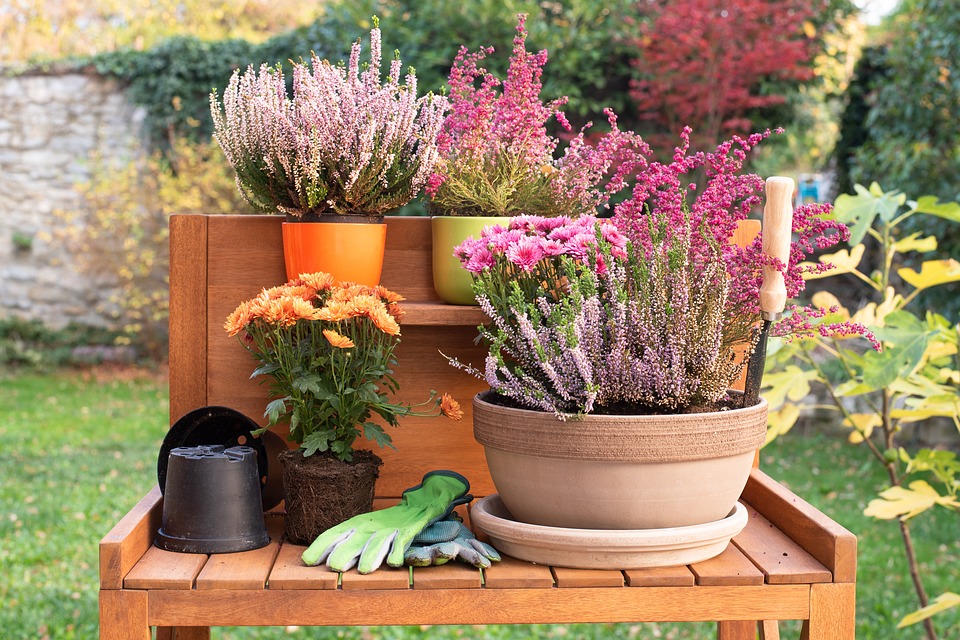Fertilizer for plants is as necessary as water. Having the right levels of each nutrient is essential for development. Not all fertilizers are the same or universal. There are care features for flowering species. The market is full of offers that are easy to get lost in. The editors of the site "bestx.htgetrid.com/en/" have prepared for you a rating of the best fertilizers for flowers for 2020. Consider mineral, organic and organomineral additives that guarantee abundant flowering on the windowsill, balcony, in the garden.
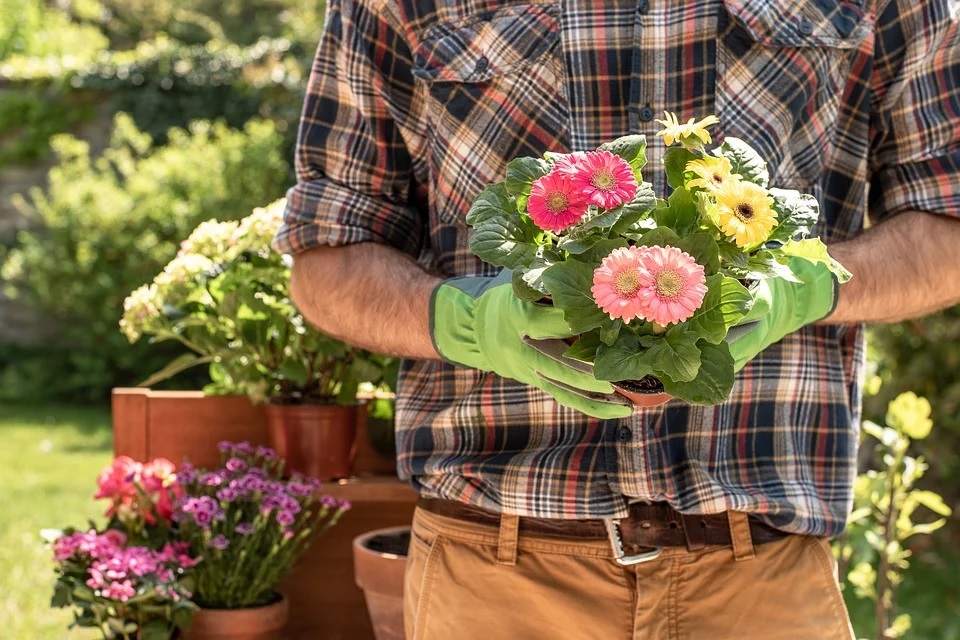
Content
Feeding for flowering plants
All plants need to be fed, no one can escape this rule. Providing the right nutrients (in the right quantities and at the right time) is a vital need for successful growth. Even fertile soil requires special additives.
Plants take hydrogen, carbon and oxygen from water and the atmosphere, but nutrients come from the earth. When the soil is not strong enough, or loosens over time, the solution is to add fertilizer. This contribution should be calculated based on the plant's needs and soil characteristics.
How to choose the best mineral plant fertilizer? By composition. Consider the main ingredients: nitrogen, phosphorus and potassium. What to look for: The percentage of each nutrient is listed on the package using the abbreviation NPK. For example, marking 10: 5: 5 means that the fertilizer contains 10% nitrogen (N), 5% phosphorus (P), 5% potassium (K). A fertilizer that supplies these three types of nutrients is called "complete".
Fertilizers also contain secondary nutrients such as calcium, sulfur, iron, zinc and others. Selection criteria for additives: plant variety, period of development, its condition and preferences.
Florist advice on composition also boils down to preference for formulas without nitrates and chlorine.
If you cannot test the soil or understand what a particular plant needs, you can buy a balanced fertilizer such as 10:10:10, which contains equal amounts of each of the main three ingredients.
Fertilizer with more nitrogen is beneficial for the growth phase. If there is more phosphorus and potassium, this is the right choice for the flowering period.
The modern market offers so-called "boosters" RK (flowering stimulants). A type of fertilizer containing only phosphorus (P) and potassium (K), the two most important nutrients for flowering. Experienced growers note that such a formula without nitrogen does not provide adequate nutrition, therefore it is recommended only as a supplement for two to three weeks in the final stage of flowering.
In addition to mineral nutrients, there are organic nutrients designed to enrich the land. These are compost, ash, sawdust, manure and other products.They do not contain NPK elements, but are required for plant care.
Is it possible to replace mineral fertilizers with organic ones? The price will be cheaper, the consumption is more practical. But the replacement should not be permanent, these types of dressings perform different functions.
On the market there are formulations with mineral and organic compounds called organomineral fertilizers. This is the most complete form of nutrition.
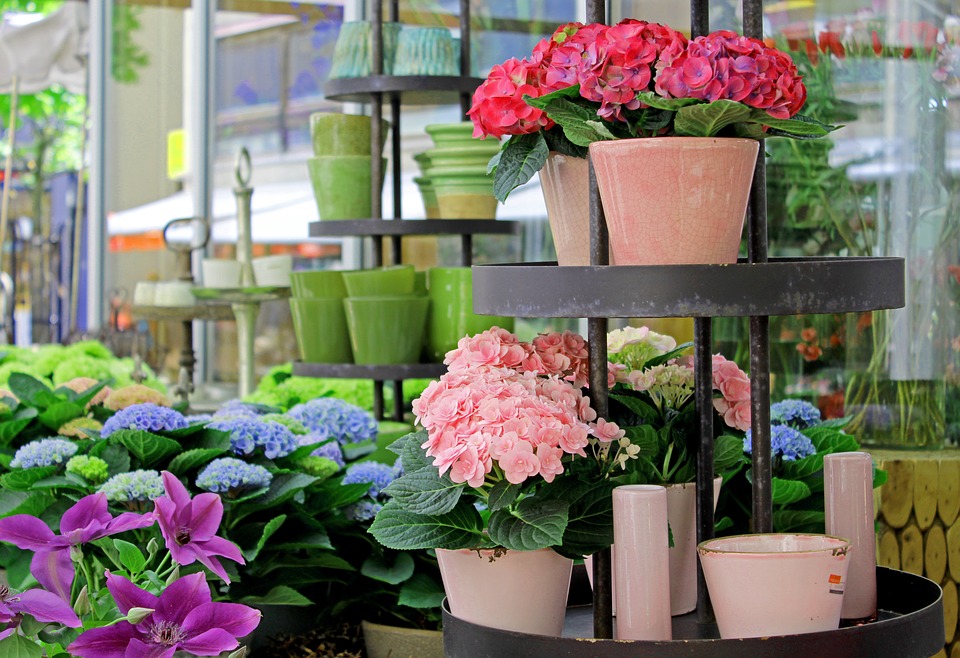
What are the types of fertilizers
The grouping is carried out on different grounds.
The type of substance.
- Mineral;
- Organic;
- Universal (organomineral).
The rating is built on this classification.
Release form.
- Powder;
- Granules;
- Liquids.
Growers often choose liquids. They are ready-made, easy to use, and can be watered and sprayed. But at a price more expensive than dry. In addition, experts recognize granular forms as the best, since they provide a slow, gradual intake of nutrients.
The product overview shows that manufacturers are experimenting and gradually rare configurations appear, for example, new products in the form of gel or lozenges.
Seasonality.
- For a specific season;
- All year round.
Act.
- Protection from pests;
- Weed control;
- Soil restoration;
- Strengthening immunity;
- Growth stimulation;
- Nutrition.
The list of effects is expanding, the best manufacturers compete with each other to clarify the beneficial effects. For our rating, products for flowering plants are of interest.
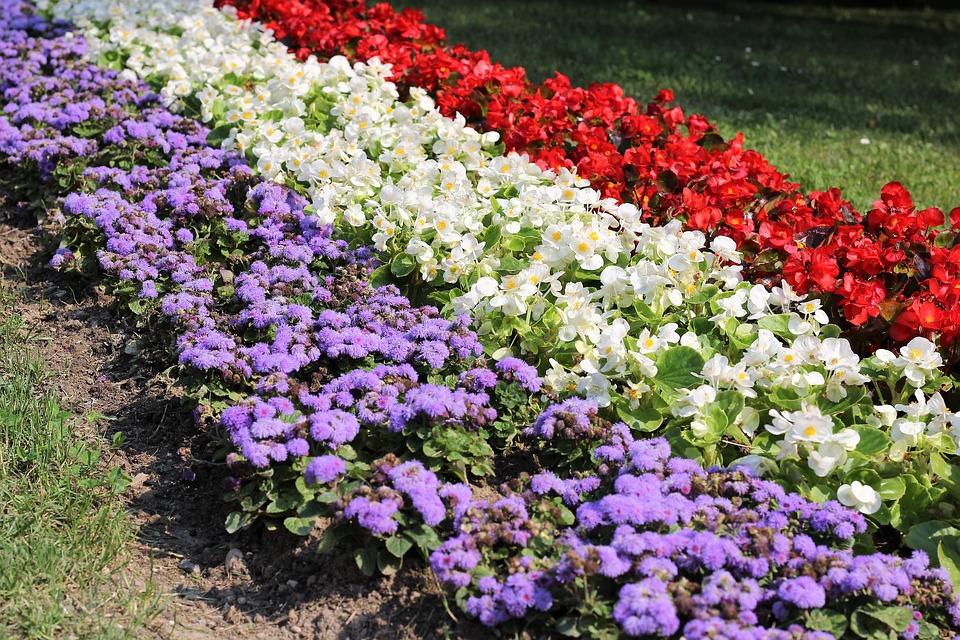
Best flower fertilizers for 2020
Organic
Wood ash granulated "Vitaflor"
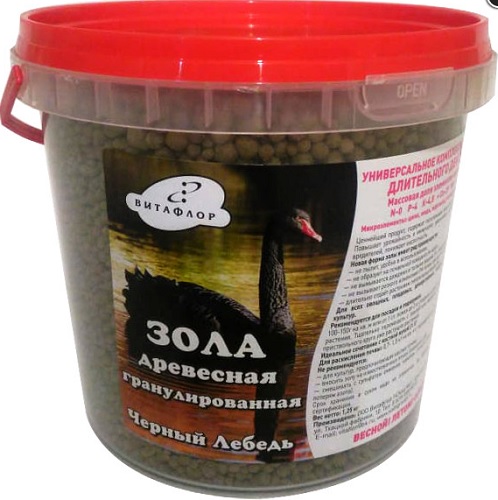
Ash is a valuable remedy, a natural source of magnesium, sodium, calcium, phosphorus, potassium. Strengthens productivity, immunity, protects any crops from diseases, restores weakened plants to life. Flowers take root better, produce large buds, delight for a long time with an intense color and aroma. It is important to consider the type of soil and variety, for example, violets require a minimum of ash. The modern form of release in granules does not generate dust, does not wash out, gives off nutrients measured and for a long time, does not drastically change the characteristics of the soil. Weight 1 kg. How much: a plastic liter bucket - 140 rubles.
Advantages:
- Natural material for feeding;
- The convenience of use;
- Gradual nourishment;
- Strengthening the immune system.
Disadvantages:
- Not detected.
Fertilizer organic dry "Chicken droppings" Fasco
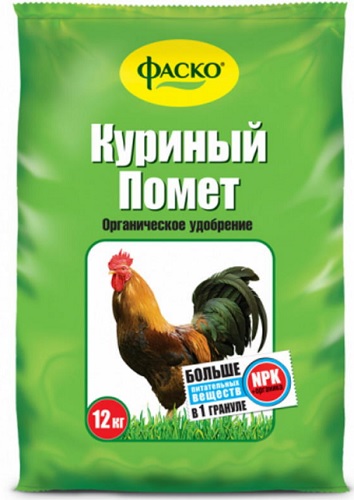
Fasco's Russian-made products receive numerous positive reviews. Chicken manure is a classic that increases yields and blooms, and provides soil restoration. The manufacturer dried natural material, granulated with preservation of nutrients. This form guarantees environmental safety, does not contain pathogenic microflora, does not have a pungent odor, and does not change characteristics during long-term storage. Packing in packages from 0.8 to 3.5 kg. The price starts from 180 rubles.
Advantages:
- Harmless natural composition;
- No smell;
- Improvement of all types of soils;
- Improving the decorative qualities of the plant;
- Prolonged action;
- Convenience of use and storage.
Disadvantages:
- Not detected.
Concentrated horse manure "Soft Power"
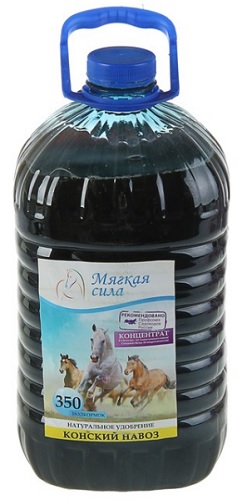
A proven product for plant care. Contains elements that stimulate the vegetative process necessary for optimal flowering. The manufacturer uses the fermentation method at a temperature of 43-56 degrees. The resulting concentrate is applied in various ways, step by step instructions on the package. After active shaking, it is diluted with water. The ratio for flowers is 1 to 20. Then you can soak the seeds, spray, water. Outdoors or indoors. More often in summer, less often in winter. The average price for 5 liters is 300 rubles.
Advantages:
- Naturalness, environmental friendliness;
- Economical consumption;
- All-season;
- A variety of uses.
Disadvantages:
- Not detected.
Pine bark UltraEffect Deco
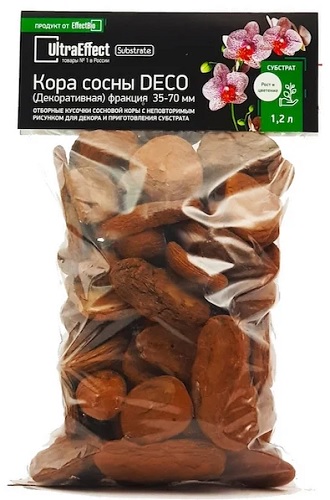
Gardeners actively use chips of pine bark in their summer cottages, protect flowers from frost or drought. In addition, the flowerbed looks well-groomed and decorative. For indoor flowers, bark is used to create a substrate. Roses and orchids respond more gratefully than others. Mulch decomposes over time, leaving no harmful waste. Serves for several years. Contains insect repellent fungicides. Varies in particle size. A 1.2 liter package with pieces from 10 to 30 mm costs 120 rubles. Size 35-70 mm - 180 rubles.
Advantages:
- No harmful substances;
- Prolonged effect;
- With decoration function.
Disadvantages:
- Expensive in large areas.
Mineral
Agricola for flowering plants
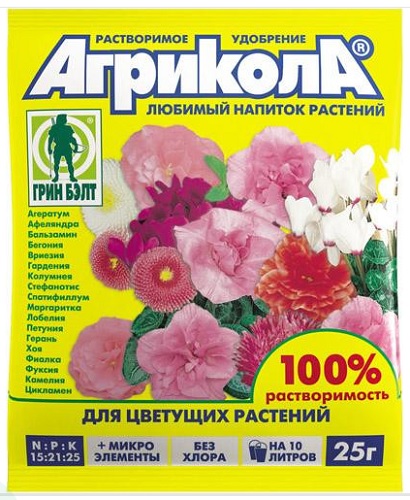
Agricola's products stand out for their narrow focus and variety of formats. For example, the flowering series includes dry dressings, granules and sticks, liquid and gel solutions. Economical, lasts for a long time. Budgetary. 25 g bags cost 20 rubles. In this case, the consumption rate is 2 g per 1 liter of water. Versatile, suitable for many colors. Complexes for certain species are also sold: orchids, roses, hydrangeas. Customer reviews are extremely positive. The preparations show high efficiency, the flowers bloom quickly, magnificently, for a long time. Preference is given to dry forms for their cheapness and shelf life without restrictions, but you should not abuse it, the powder crumbles over time.
Advantages:
- Chlorine and nitrates free;
- Variety of release forms;
- Visible flowering result;
- Acceptable price.
Disadvantages:
- Not detected.
Fertilizer for roses and flower beds with bioavailable silicon Bona Forte
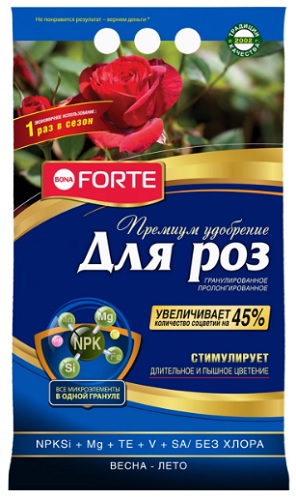
Fertilizers are produced in Russia using original American technologies. The manufacturer positions the fertilizer for flower beds as a flowering stimulant. In each granule NPK 5:13:13. In addition, magnesium, calcium, zinc, manganese, iron and others. Vitamins: C, B1, PP. Succinic acid to stimulate growth. The strong point is silicon. There is a lot of it, 23%, it reduces stress, the number of pests, soil salinity; increases productivity, creates favorable conditions for the formation of buds. Begins to act instantly, but for a long time. Sometimes a single application per year is sufficient, usually in the spring. Granular form. A 2.5 kg package costs 300 rubles.
Advantages:
- Chlorine-free composition;
- Balance of elements in each granule;
- Local economical application method;
- Slow absorption of beneficial components;
- Flowering optimization.
Disadvantages:
- Not detected.
Mineral fertilizer for hydroponics Etisso
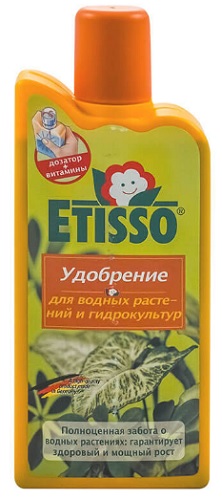
The popularity of the models of the German manufacturer Etisso is explained by innovative technologies, a variety of assortments. All existing types of fertilizers, all forms of production, packaging, as well as unique elite products are offered. For example, soluble pill sticks for indoor flowers. The hydroponic product is also in high demand as it dissolves quickly and is compatible with all types of existing substrates. The complex of substances stimulates growth and intensive development. Nitrogen 5.2%, phosphorus 5%, potassium 4.2% work for this. As well as iron, zinc, manganese, other minerals and vitamin thiamine (B1). The drug is concentrated and lasts for a long time. For 3 liters of water, 10 ml is required. Sold at 250 and 500 ml, for 290 or 400 rubles, respectively.
Advantages:
- High-tech production;
- The most diverse offer;
- Excellent composition, enriched with vitamins;
- For coco and other systems;
- Dispenser-distributor.
Disadvantages:
- Not detected.
Advanced Hydroponics Grow
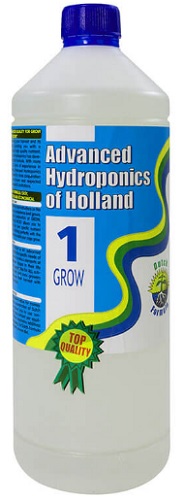
Another highly professional Dutch hydroponics product. Improves growth performance in automatic soilless growing systems. At the same time, it can be used outdoors. Versatile.Works by balancing pH levels throughout the growing season. Formation of strong roots, stems and leaves leads to a vigorous, profuse flowering. It has no competitors on the Russian market. Super nutritious cocktail is patented. The main component is nitrogen. Volume: liter. Average price: 1000 rubles.
Advantages:
- European quality standards;
- Patented unique formula;
- Balanced complex of nutrients;
- PH regulator;
- Strengthening plant immunity.
Disadvantages:
- Highly concentrated preparation, requires careful use.
Universal (organomineral)
"Ekofus" based on algae
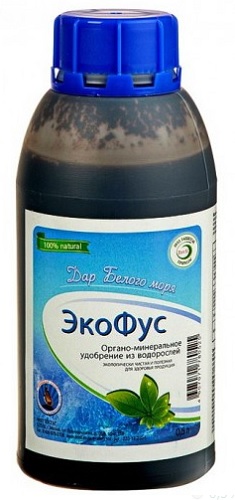
A unique organic-mineral fertilizer, works due to the power of seaweed. Includes more than forty active nutrients, trace elements, amino acids, vitamins, enzymes, natural antibiotics. Properties: immunostimulating, antiviral, antibacterial, fungicidal. Helps plants breathe, metabolize, produce large, strong flowers. Improves soil structure, air permeability. The manufacturer recommends a combination of spraying and watering. A liter of the drug costs 450 rubles, half a liter - 240.
Advantages:
- Super useful components;
- Improving soil fertility;
- Flowering stimulant.
Disadvantages:
- Not detected.
Gumi-Omi Potassium Potassium Sulfate
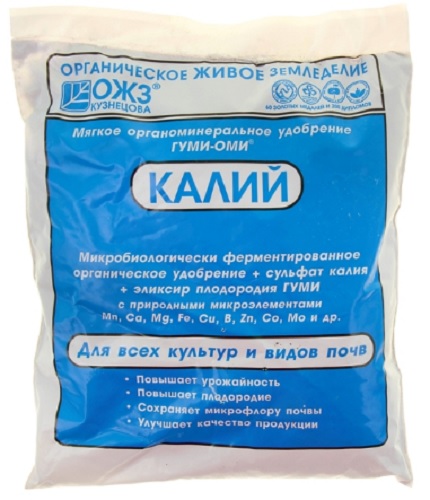
Fertilizer produced by OZhZ Kuznetsov is a heterogeneous mixture consisting of powder, granules and agglomerates. As can be seen from the NPK indicators (0.5: 1.25: 30), it contains a lot of potassium. In addition, the composition includes humic acids, macro and micro elements, as well as 6% organic compounds. Potassium deficiency is visible in the appearance of the leaves, the edges turn yellow, covered with "rusty" spots. Potash fertilizers are especially effective on peat and sandy areas. This is a popular group of dressings, not only for flowers. Customer reviews indicate that with the addition of Gumi-Omi, the plant comes to life, looks healthy, pleases with long flowering or bountiful harvest. A half-kilogram package is sold at a price of 250 rubles.
Advantages:
- Versatility, for all plants;
- Two-in-one composition: organics and minerals;
- Soil restoration;
- Visible effect.
Disadvantages:
- Not detected.
Miracle spray "Flower Paradise" Buysky fertilizers
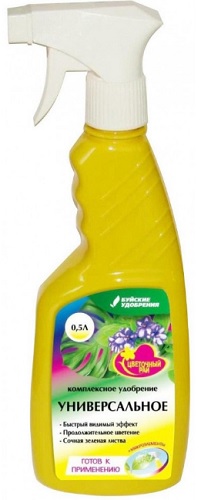
Liquid complex composition for the care of plants, deciduous and flowering plants. Suitable for indoor flowers, and those that grow in the garden or in the country. NPK 0.23: 0.23: 0.34, as well as magnesium, iron, zinc and other trace elements. Tips on the amount of application on the packaging: from March to September 1 time per week, from October to February 1 time per month. Customer reviews are the best: the effect is visible after a couple of days, stimulates the compaction of leaves, the development of buds, and lush flowering. A plastic bottle with a spray bottle is sold at a price of 125 rubles. Volume: 0.5 liters.
Advantages:
- Ready-to-use solution;
- Season independence;
- Fast results;
- Economical consumption.
Disadvantages:
- Not detected.
IRIS OHYAMA INC Japanese Green Universal Fertilizer
The functionality of the Japanese-made product is striking in its variety: protects against excess moisture, aridity, frost; increases resistance to pests and diseases; stimulates growth, root formation; guarantees abundant long flowering. Designed for flowers, potted and decorative leafy crops. Formula of nitrogen, phosphorus, potassium, magnesium, copper, iron, zinc and other elements. Manufacturer's recommendations for use: for intensive healing, insert the bottle into the pot at an angle of 45 degrees. Alternatively, dilute 8 drops in 5 liters of water for large areas and healthy plants. According to buyers, spraying is no less effective. Volume: 35 ml. Average price: 89 rubles.
Advantages:
- Balanced composition;
- A variety of uses;
- Visible performance;
- Wide range of effects.
Disadvantages:
- Not detected.
Natural supplements. Recipes "from grandmothers"
If the need for fertilizer volumes is small, folk remedies are suitable at home.
Sugar... Pour a teaspoon of sugar into a pot, pour over. Recommended once a month. Glucose fills with energy.
Yeast... For the care of plants, they are useful due to phytohormones, mushrooms and vitamins of group B. To prepare a concentrate with your own hands, take 2 g of yeast and a spoonful of sugar for two liters of water. Insist for a couple of hours. Then dilute in a ratio of 1 to 5.
Leftover fruit... Bananas or citrus fruits are recommended, they feed all flowering plants. Dry the peel, chop in a blender, mix with earth. Or put the peels in a three-liter jar, filling by a third, pour boiling water over, leave for a day. Discard the cake, add water. Use for spraying or watering.
Vegetable decoctions... The most common is a decoction of onion peels. A complete set of trace elements saturates plants, increases resistance to pests. How to cook: Boil 50 g of husk in a liter of water, then simmer for 10 minutes over low heat. After complete cooling, strain, pour into a spray bottle, spray the plants. Important: vegetable broths are prepared at one time, they cannot be stored.
There are other inexpensive methods that help fertilize at home. aquarium water, succinic acid, eggshells, cereal rinsing water, tooth powder, coffee residues, tea leaves.
There are supporters and opponents of each remedy. Mistakes in the choice will be noticeable immediately, it is important to independently monitor the response of each plant to a particular product.
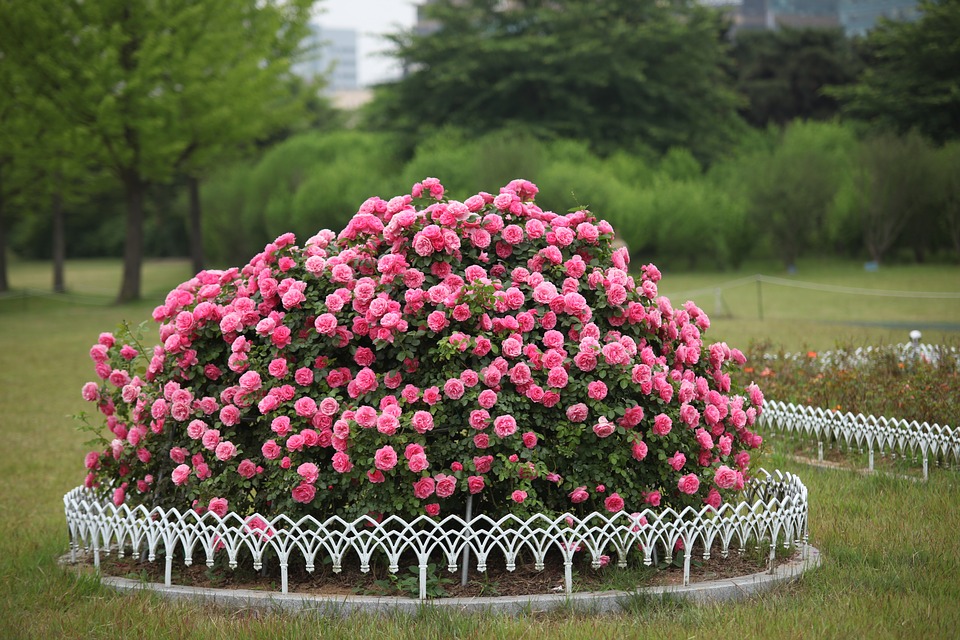
Conclusion
Plants, like humans, need a healthy, balanced diet to grow. The use of fertilizers has a positive effect on root development, plant size, and the beauty of flowering. The most convenient is universal feeding. In what form, liquid or solid, you decide. The main thing is to understand the state of flowers and not to harm. An oversupply of fertilizer is worse than a lack of fertilizer.
If you have experience and opinion about which additives of which company is better for certain flowers, where to buy and how to get a luxurious flowering result, share your knowledge in the comments.

